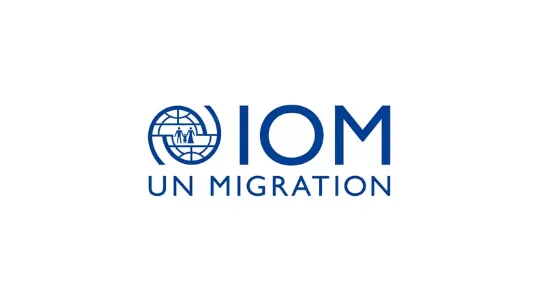Myanmar Crisis Response Plan 2023
28 December 2022

IOM Vision
IOM, in coordination with humanitarian and development partners, seeks to support the people of Myanmar through the provision of essential and life-saving multi-sectoral assistance to crisis-affected populations, while building local capacities for response and recovery. Recognizing the complex mobility dynamics and cross-border implications of the crisis, IOM aims to provide data and analysis on mobility and needs to the wider humanitarian community and will continue to coordinate to ensure that preparedness actions and targeted response capacities are in place and strengthened.
Context analysis
Almost two years since the military takeover in February 2021, the economic, political, and social crisis in Myanmar has become more complex, with no signs of resolution. Myanmar faces acute humanitarian needs, public infrastructure and services have deteriorated with the departure of personnel who have joined the civil disobedience movement (CDM), and as the country faces the consequence of global crises – including but not limited to rising inflation and prices for basic commodities.
Conflict-related displacement continues unabated, with 1.1 million people having been forced to flee their homes since February 2021, out of 1.4 million total displaced in the country. The highest rates of displacement are in the North-West, where 770,400 people remain displaced since February 2021, of which 612,400 are in Sagaing region alone (OCHA, 2022). Active conflict and clashes also continue in the South-East where just under 300,000 people remain displaced. In these locations, families experience repeated, short-term displacement, moving to avoid armed actors, often in hard-to-reach forest areas. There are frequent reports of arson attacks against villages, leading to widespread destruction of homes, public buildings and personal as well as livelihood assets.
Protection risks are grave, with increasing incidents of injuries due to explosive remnants of war, regular reports of arbitrary arrests and detention, as well as greater risks of domestic, gender-based violence and exploitation and abuse against the backdrop of increasing lawlessness and limited means for accessing formal justice systems. In Rakhine, clashes have recently intensified, resulting in 20,000 newly displaced as of September 2022. Security measures have also been imposed, limiting the movement of people and goods. Humanitarian access is a challenge due to several factors – including operational impediments imposed by authorities, hard-to-reach rural, mountainous, or jungle areas people are displaced to, as well as conflict-related insecurity leading to roadblocks, checkpoints and travel restrictions.
The economic downturn due to COVID-19 and the political turmoil has resulted in increasingly complex and mixed population movements, both internally and internationally, including regular and irregular cross-border movements between Myanmar and neighbouring countries in both directions. Amongst these overall flows, the proportion of migrants migrating from or returning to conflict-affected contexts (including to/from a situation of existing displacement) has increased. Disrupted livelihoods, deteriorating economic and security conditions, and increasing mobility have also increased protection risks and vulnerabilities, as people resort to unsafe and high-risk migration strategies, posing greater risk of trafficking, exploitation or abusive recruitment practices, including from displacement sites such as camps. As of October 2022, IOM estimates that approximately 40,000 Myanmar nationals are leaving the country monthly for conflict-related but also economic and other reasons, through a range of regular and irregular pathways, with the majority migrating to Thailand.
In 2023 displacement is expected at a similar or higher rate as a result of the ongoing or worsening conflict. Humanitarian space is also expected to worsen, with increased scrutiny on humanitarian organizations. Public health and education services will likely continue to be disrupted, including services related to COVID-19, with protection risks increasing. The Financial Action Taskforce’s “call for action” blacklisting of Myanmar in October 2022 will likely further disrupt banking services and impact the financial flows into the country. Planned elections in 2023 could result in additional widespread insecurity and subsequent clampdown by the Myanmar Armed Forces, while de facto authorities are expected to push for camp closures and forced returns.
With high vulnerability and low readiness, Myanmar is ranked as one of the world’s most at-risk countries for climate change. The country ranks 156 out of 182 countries on the Notre Dame Global Adaptation Initiative Index on climate vulnerability. Myanmar continues to be at risk for disasters due to natural hazards, such as tropical storms, cyclones, and earthquakes. The country is also vulnerable to sea level rise and as the majority of the population relies on agricultural livelihoods which are climate-sensitive, additional action is urgently required on adaptation.
Download Full Report
Download Summery Report
View the original
Announcements
28 February 2025
Asian NGO Network on National Human Rights Institutions , CSO Working Group on Independent National Human Rights Institution (Burma/Myanmar)
Open letter: Removal of the membership of the dis-accredited Myanmar National Human Rights Commission from the Southeast Asia National Human Rights Institution Forum

Progressive Voice is a participatory rights-based policy research and advocacy organization rooted in civil society, that maintains strong networks and relationships with grassroots organizations and community-based organizations throughout Myanmar. It acts as a bridge to the international community and international policymakers by amplifying voices from the ground, and advocating for a rights-based policy narrative.